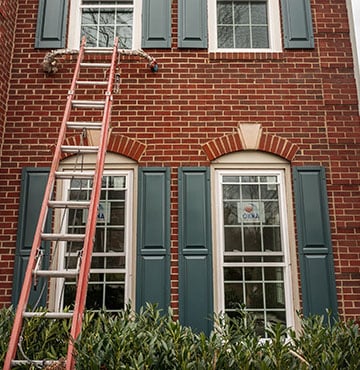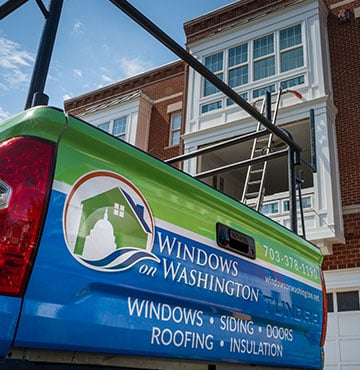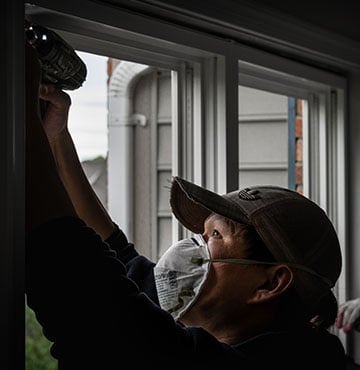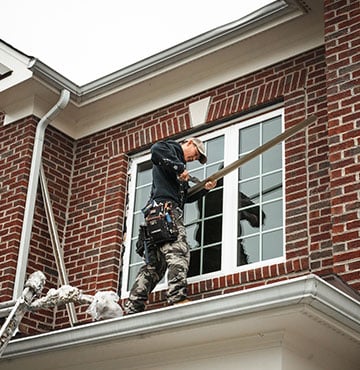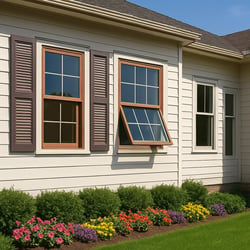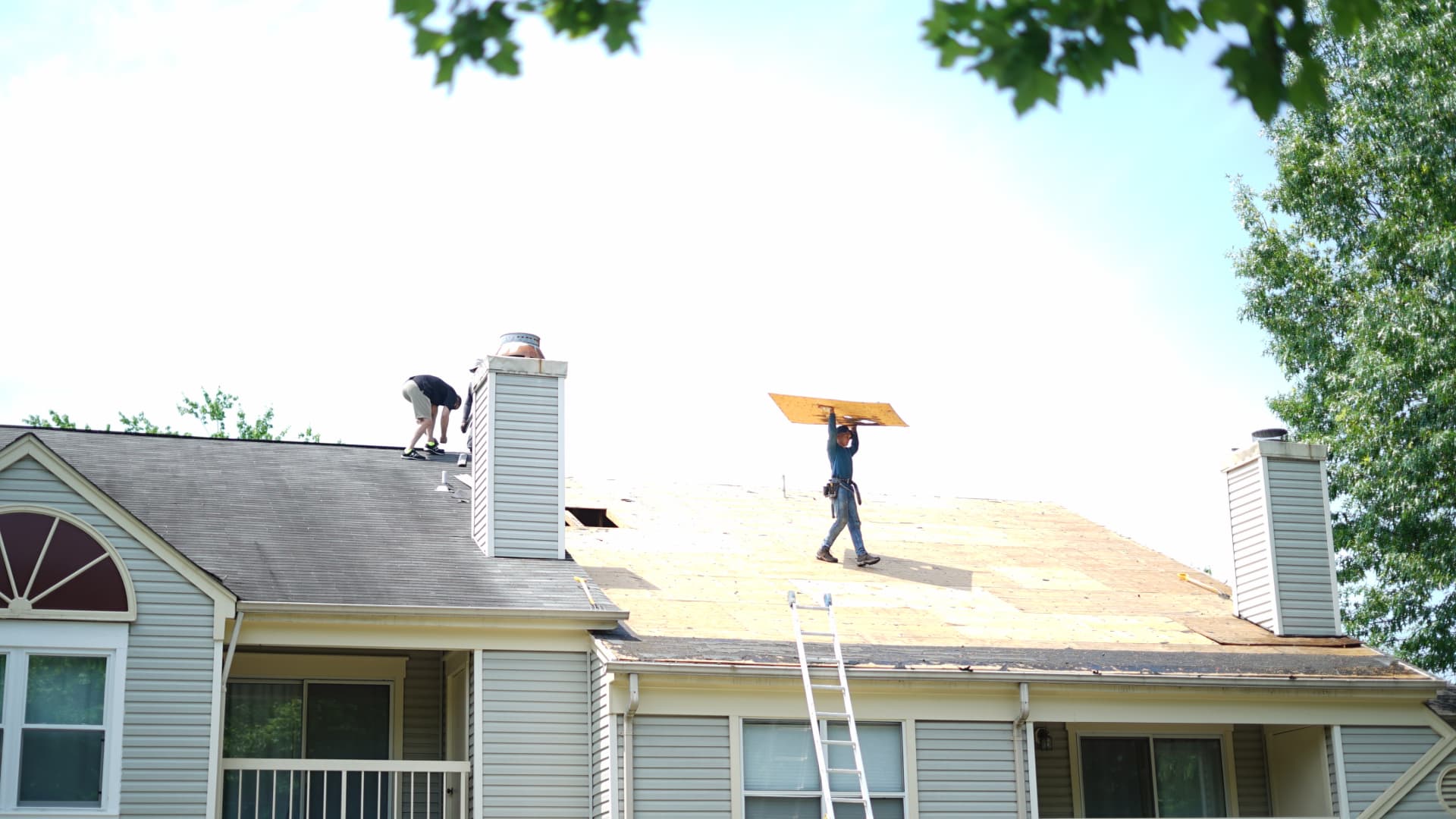
Has Your Home’s Roof Seen Better Days?
A replacement roof is one of the best home improvement investments a homeowner can make. Not only does a replacement roof improve the look of your home, it’s the first line of defense against the elements and immediately increases the value of your home.
Schedule a free roofing consultation with Windows on Washington today!
Curious about your home improvement options?

We Created a Better Way to Do Business
Simply put — we believe that improving your home should be enjoyable. That is why we spent years designing our consultations, installations, and client care experiences to provide every client with a stress-free home improvement experience. Founded in 2005, Windows on Washington has become one of the area's most respected home improvement companies because we make our clients' homes more beautiful, comfortable, and energy efficient.

Premier People
Honest. Loyal. Experts in their field. That’s how we describe our team members. Many of them have been with us for over 18 years! When you want your project done right, always ask WHO will be doing the work.

Premier Products
After more than 18 years in the home improvement industry, we understand the differences between various brands and we choose the products we offer very carefully. We have done a tremendous amount of research so you don’t have to, and we stake our reputation on this knowledge.

Premier Process
We have a comprehensive 12-step client care process that will keep you up-to-date every step of the way. Our Client Care Team works closely with you so you know your project status at all times!

Is it Time to Replace Your Roof?
Deciding whether you need to replace your roof depends on a variety of factors:
- Water or moisture damage. If water or moisture has damaged your roof, leading to brown ceiling spots, mold, or peeling paint, it's usually a sign you should replace your roof. Water infiltration can exacerbate damage and pose health risks, making a full replacement more viable than simple repairs.
- Age. The age of your roof is also crucial. A leaking roof less than five years old might indicate poor installation or material defects. Conversely, a 15-year-old roof with multiple issues is approaching its lifespan's end, signaling the need for a replacement.
- Materials. When deciding to replace your roof, you need to consider the existing roofing material. For example, a slate roof that is 50 years old might have 20+ years ahead of it, whereas a 20 year old asphalt roof is generally well past its prime and is due to be replaced.
Benefits of a New Roof
Below are some of the most important reasons why a new roof is worth your money and time, and what benefits it can bring to your home.
-
When considering a new roof, it is important to consider both cost and return on investment. Did you know that a new quality roofing system has an ROI of around 70%? This makes replacing your roof among the highest return on investment of any home improvement project.
-
Older roofs nearing their life expectancy can pose safety risks, such as water damage leading to mold and mildew. They are also more susceptible to severe damage during extreme weather conditions.
-
Many of today’s quality roofing systems have increased insulating values, as well as ‘cool’ roofing options, which can increase your home’s heat deflection and save you in energy costs. Be sure to ask your Windows on Washington consultant about how air sealing and insulation for your attic can further improve energy efficiency!
-
A new roof can remedy the unsightly appearance of mildew, streaking, and faded or missing shingles, giving your home an immediate aesthetic upgrade.
%20(720%20%C3%97%20510%20px)%20(860%20%C3%97%20600%20px)%20(860%20%C3%97%20550%20px).png?width=860&height=550&name=Untitled%20(860%20%C3%97%20860%20px)%20(720%20%C3%97%20510%20px)%20(860%20%C3%97%20600%20px)%20(860%20%C3%97%20550%20px).png)
What Roofing Material is Right for My Home?
Asphalt shingles are a popular roofing material due to their low cost, easy installation, resilience, and choice of colors. They come in traditional 3-tab shingles or thicker laminated ‘architectural’ shingles. They are made out of paper fiber mat (ideal for cold weather and wind resistance) or fiberglass (better fire and moisture resistance). However, asphalt shingles do have a lower insulation value and a shorter lifespan than other roofing materials.
%20(720%20%C3%97%20510%20px)%20(860%20%C3%97%20600%20px)%20(860%20%C3%97%20550%20px)%20(1400%20%C3%97%201001%20px).png?width=1400&height=1001&name=Untitled%20(860%20%C3%97%20860%20px)%20(720%20%C3%97%20510%20px)%20(860%20%C3%97%20600%20px)%20(860%20%C3%97%20550%20px)%20(1400%20%C3%97%201001%20px).png)
Cedar style shingles and shakes come in a variety of finishes including cedar, redwood and pine. Cedar style shingles can have a hand split look to provide a more authentic wood appearance. With wood shingles, maintenance can be an issue, as wood roofs have poor fire ratings and are susceptible to rot, splitting and mold. Composite shingles are engineered to mitigate the issues of natural wood shingles and have a dramatically longer life span, however, they are generally more expensive.
%20(720%20%C3%97%20510%20px)%20(860%20%C3%97%20600%20px)%20(860%20%C3%97%20550%20px)%20(1400%20%C3%97%201001%20px)%20(1).png?width=1400&height=1001&name=Untitled%20(860%20%C3%97%20860%20px)%20(720%20%C3%97%20510%20px)%20(860%20%C3%97%20600%20px)%20(860%20%C3%97%20550%20px)%20(1400%20%C3%97%201001%20px)%20(1).png)
Metal roofing is available in copper, aluminum and stainless steel, and often contains a large amount of recycled materials. Metal roofs offer high solar reflectance and great durability. On average, they last almost twice as long as wood or asphalt roofs. Metal roofing is also much lighter than other roofing materials and incredibly resistant to inclement weather and wind. Metal roofing comes in many styles and can mirror the look of traditional roof coverings like shingles, slate and tile.
%20(720%20%C3%97%20510%20px)%20(860%20%C3%97%20600%20px)%20(860%20%C3%97%20550%20px)%20(1400%20%C3%97%201001%20px)%20(2).png?width=1400&height=1001&name=Untitled%20(860%20%C3%97%20860%20px)%20(720%20%C3%97%20510%20px)%20(860%20%C3%97%20600%20px)%20(860%20%C3%97%20550%20px)%20(1400%20%C3%97%201001%20px)%20(2).png)
Clay tiles are a popular roofing choice in some cases due to their durability and non-combustible materials. However, they are quite heavy and do require additional roof framing. Clay tiles come in lighter colors, which have the ability to reflect over 50% of solar energy. They are versatile and come in many colors, shapes and textures, offering homeowners plenty of choice. Both clay and concrete roof tiles are fire-resistant, and offer great insulation and wind resistance.
%20(720%20%C3%97%20510%20px)%20(860%20%C3%97%20600%20px)%20(860%20%C3%97%20550%20px)%20(1400%20%C3%97%201001%20px)%20(3).png?width=1400&height=1001&name=Untitled%20(860%20%C3%97%20860%20px)%20(720%20%C3%97%20510%20px)%20(860%20%C3%97%20600%20px)%20(860%20%C3%97%20550%20px)%20(1400%20%C3%97%201001%20px)%20(3).png)
-
%20(720%20%C3%97%20510%20px)%20(860%20%C3%97%20600%20px)%20(860%20%C3%97%20550%20px)%20(1400%20%C3%97%201001%20px).png?width=1400&height=1001&name=Untitled%20(860%20%C3%97%20860%20px)%20(720%20%C3%97%20510%20px)%20(860%20%C3%97%20600%20px)%20(860%20%C3%97%20550%20px)%20(1400%20%C3%97%201001%20px).png)
Asphalt shingles are a popular roofing material due to their low cost, easy installation, resilience, and choice of colors. They come in traditional 3-tab shingles or thicker laminated ‘architectural’ shingles. They are made out of paper fiber mat (ideal for cold weather and wind resistance) or fiberglass (better fire and moisture resistance). However, asphalt shingles do have a lower insulation value and a shorter lifespan than other roofing materials.
-
%20(720%20%C3%97%20510%20px)%20(860%20%C3%97%20600%20px)%20(860%20%C3%97%20550%20px)%20(1400%20%C3%97%201001%20px)%20(1).png?width=1400&height=1001&name=Untitled%20(860%20%C3%97%20860%20px)%20(720%20%C3%97%20510%20px)%20(860%20%C3%97%20600%20px)%20(860%20%C3%97%20550%20px)%20(1400%20%C3%97%201001%20px)%20(1).png)
Cedar style shingles and shakes come in a variety of finishes including cedar, redwood and pine. Cedar style shingles can have a hand split look to provide a more authentic wood appearance. With wood shingles, maintenance can be an issue, as wood roofs have poor fire ratings and are susceptible to rot, splitting and mold. Composite shingles are engineered to mitigate the issues of natural wood shingles and have a dramatically longer life span, however, they are generally more expensive.
-
%20(720%20%C3%97%20510%20px)%20(860%20%C3%97%20600%20px)%20(860%20%C3%97%20550%20px)%20(1400%20%C3%97%201001%20px)%20(2).png?width=1400&height=1001&name=Untitled%20(860%20%C3%97%20860%20px)%20(720%20%C3%97%20510%20px)%20(860%20%C3%97%20600%20px)%20(860%20%C3%97%20550%20px)%20(1400%20%C3%97%201001%20px)%20(2).png)
Metal roofing is available in copper, aluminum and stainless steel, and often contains a large amount of recycled materials. Metal roofs offer high solar reflectance and great durability. On average, they last almost twice as long as wood or asphalt roofs. Metal roofing is also much lighter than other roofing materials and incredibly resistant to inclement weather and wind. Metal roofing comes in many styles and can mirror the look of traditional roof coverings like shingles, slate and tile.
-
%20(720%20%C3%97%20510%20px)%20(860%20%C3%97%20600%20px)%20(860%20%C3%97%20550%20px)%20(1400%20%C3%97%201001%20px)%20(3).png?width=1400&height=1001&name=Untitled%20(860%20%C3%97%20860%20px)%20(720%20%C3%97%20510%20px)%20(860%20%C3%97%20600%20px)%20(860%20%C3%97%20550%20px)%20(1400%20%C3%97%201001%20px)%20(3).png)
Clay tiles are a popular roofing choice in some cases due to their durability and non-combustible materials. However, they are quite heavy and do require additional roof framing. Clay tiles come in lighter colors, which have the ability to reflect over 50% of solar energy. They are versatile and come in many colors, shapes and textures, offering homeowners plenty of choice. Both clay and concrete roof tiles are fire-resistant, and offer great insulation and wind resistance.
How Much Does Replacing Your Roof Cost in Northern Virginia and Maryland?
The cost of a replacement roof in Virginia and Maryland will vary on multiple factors, such as:
- The size of your roof
- Your roof’s pitch
- The number of roofing facets
- How the roof is installed
- The roofing material selected
- The number of roofing layers required to remove
- Code requirements for your roof
- Skylight, chimney or pipes that need to be considered during installation
We will guide you in selecting the best roofing materials for your project and provide you with a fair and detailed estimate to get your project started today!
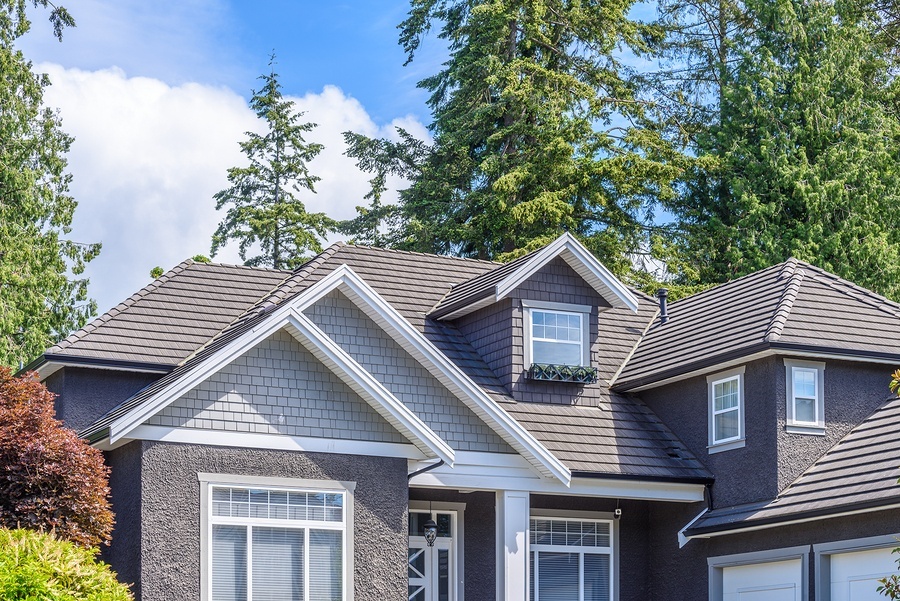
Our Reviews Speak For Themselves
After nearly 2 decades in business, client satisfaction is still what drives us to provide the highest level of quality in our service and in our products. We are proud of our reputation and do everything in our power to continue to exceed our clients' expectations.
Everyone at WoW went above and beyond, and exceeded my already high expectations. Our house is now warmer, quieter, and looks so much better!

Simply put, it was one of the best contracting / house project experiences we've had.


You Are 3 Easy Steps Away from Project Success!
-
Schedule a No-Pressure Consultation
One of our experts will discuss your project either in your home or virtually
-
Discuss Your Project
Our expert will learn about your needs, ask some questions, and suggest the best products and service for your specific project and budget, empowering you to make informed decisions
-
Choose WoW and Relax!
When you choose to partner with us, you can rest assured we will take care of every detail and keep you informed every step of the way
%20(720%20%C3%97%20510%20px)%20(500%20%C3%97%20500%20px)%20(300%20%C3%97%20300%20px)%20(400%20%C3%97%20400%20px)%20(700%20%C3%97%20700%20px)%20(480%20x%20550%20px).png?width=480&height=550&name=Untitled%20(860%20%C3%97%20860%20px)%20(720%20%C3%97%20510%20px)%20(500%20%C3%97%20500%20px)%20(300%20%C3%97%20300%20px)%20(400%20%C3%97%20400%20px)%20(700%20%C3%97%20700%20px)%20(480%20x%20550%20px).png)
What we don't do
Our focus is on residential roofing replacement and other exterior home improvement projects in the Northern Virginia and Maryland area, so there are certain types of projects we don’t take on.
- Roof repair
- Water damage to the home
- Partial roof replacement
- Roof “tune-ups” and maintenance
- Projects in DC
- Roof coating or reconditioning
